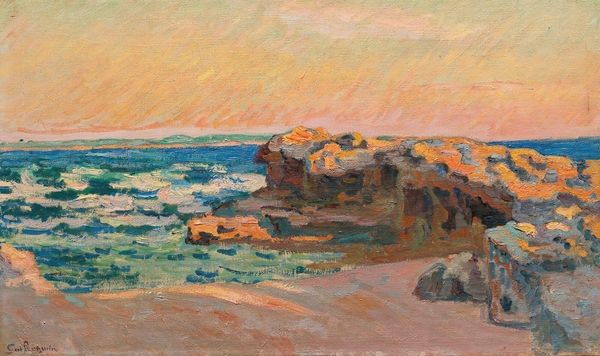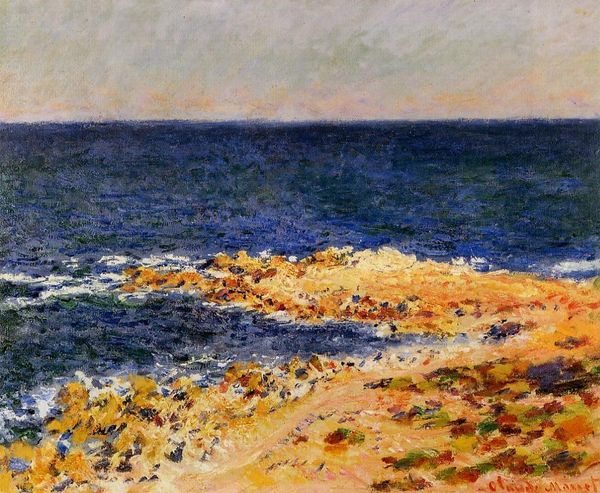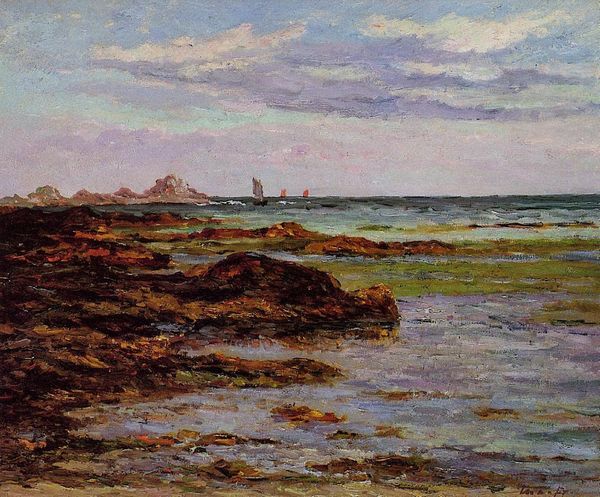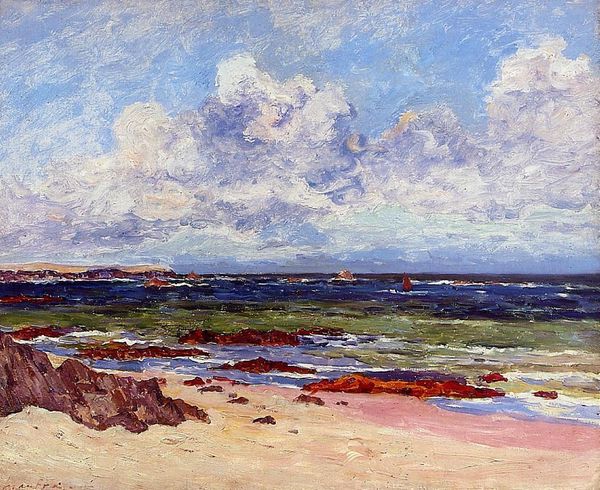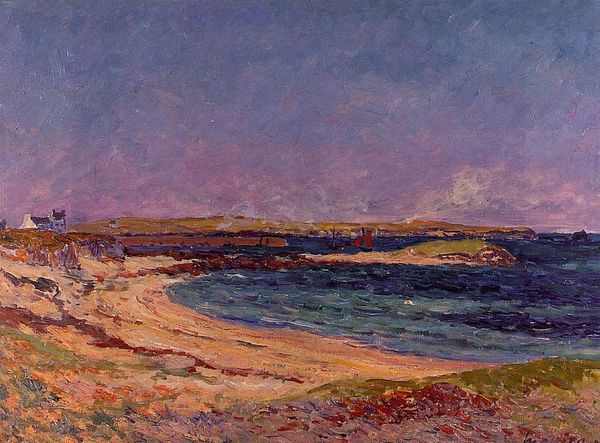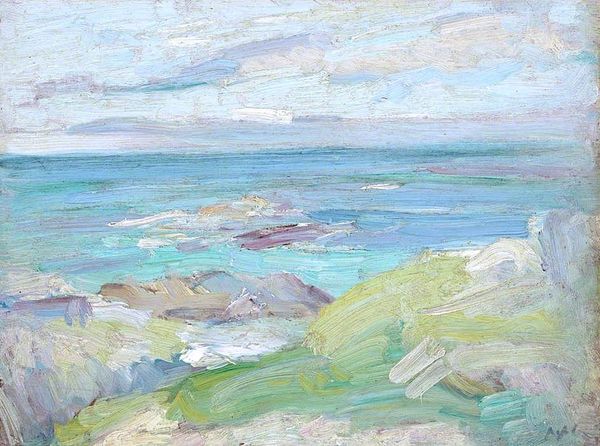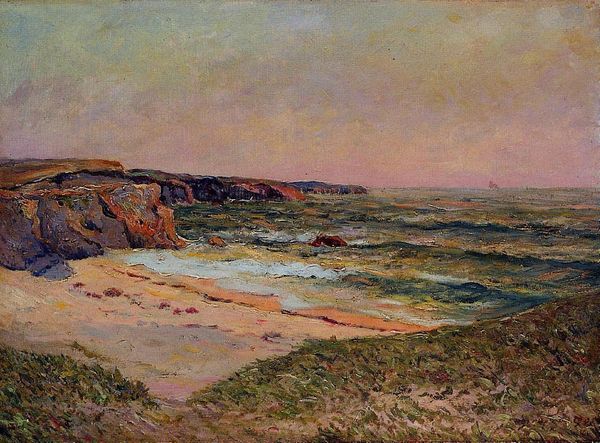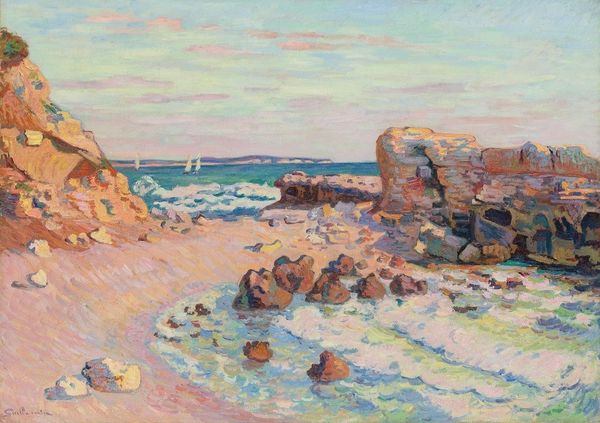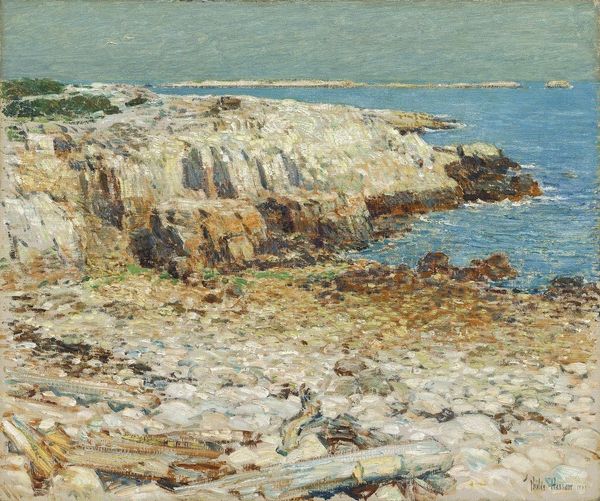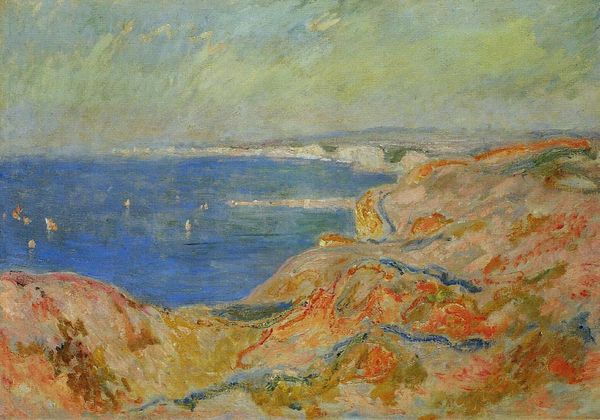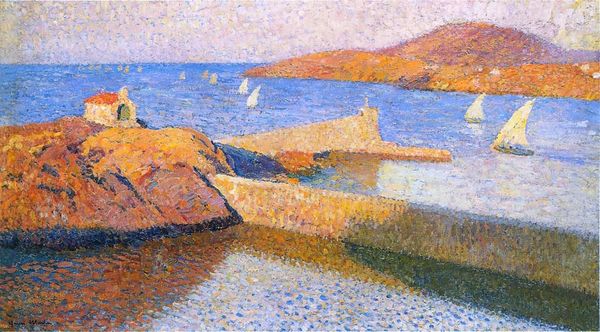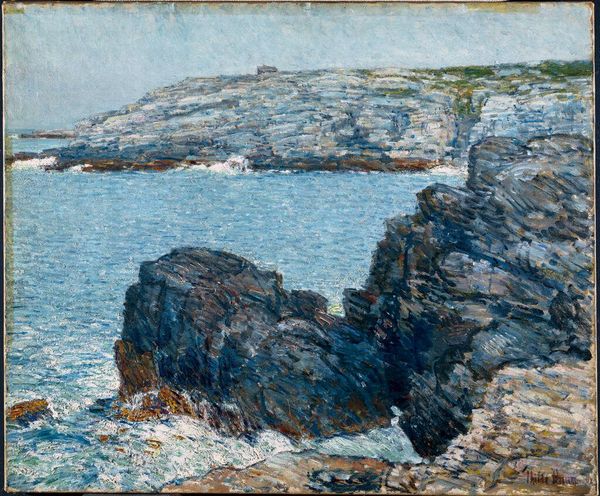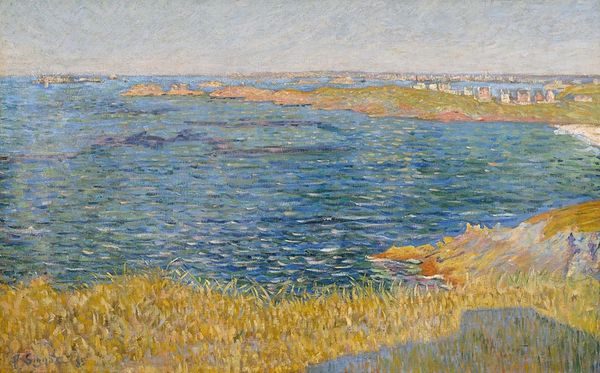
painting, oil-paint
#
boat
#
sky
#
cliff
#
abstract painting
#
ship
#
painting
#
impressionism
#
oil-paint
#
landscape
#
impressionist landscape
#
oil painting
#
ocean
#
rock
#
seascape
Copyright: Public domain
Editor: So, this is "Near Saint Malo" by Henri Martin, created with oil paint in an impressionistic style. It's so vibrant. I find the choppy brushstrokes really evoke a sense of movement in the ocean and sky, but I wonder how that energy plays into its historical context. What do you see in this piece? Curator: For me, "Near Saint Malo" presents a fascinating dialogue about representation and power. While it seemingly depicts a serene coastal landscape, we must consider who has historically had access to such leisure and picturesque views. Impressionism, often celebrated for its aesthetic qualities, was also deeply entangled with bourgeois society. Who are the implied viewers here? And what does this idealized seascape obscure about the labor and social inequalities of the time? Editor: That’s a perspective I hadn't fully considered. It's easy to get lost in the pretty colors and light, but thinking about access and privilege definitely complicates the viewing experience. The sailboats seem to suggest wealth and leisure. Curator: Exactly! We need to deconstruct the notion of a neutral landscape. Even seemingly innocent scenes reflect specific social positions and power dynamics. Who is sailing those boats, and who is excluded from that experience? How might our contemporary understanding of environmental concerns further shift our interpretation? Editor: I see what you mean. By questioning the implied perspective, we can engage more critically with the artwork. The rocks could symbolize resilience or even the harsh realities hidden beneath the surface of the shimmering water. Curator: Precisely! By considering gender, class, and historical context, we can move beyond a purely aesthetic appreciation and uncover the deeper ideological layers embedded within the artwork. It becomes a mirror reflecting not just light and color, but also the complex social relations of its time. Editor: I've definitely learned to look beyond the surface beauty and ask more critical questions. Thanks for shedding light on this piece's broader cultural implications. Curator: My pleasure. It's through these dialogues that we challenge traditional narratives and create a more inclusive and nuanced understanding of art history.
Comments
No comments
Be the first to comment and join the conversation on the ultimate creative platform.
